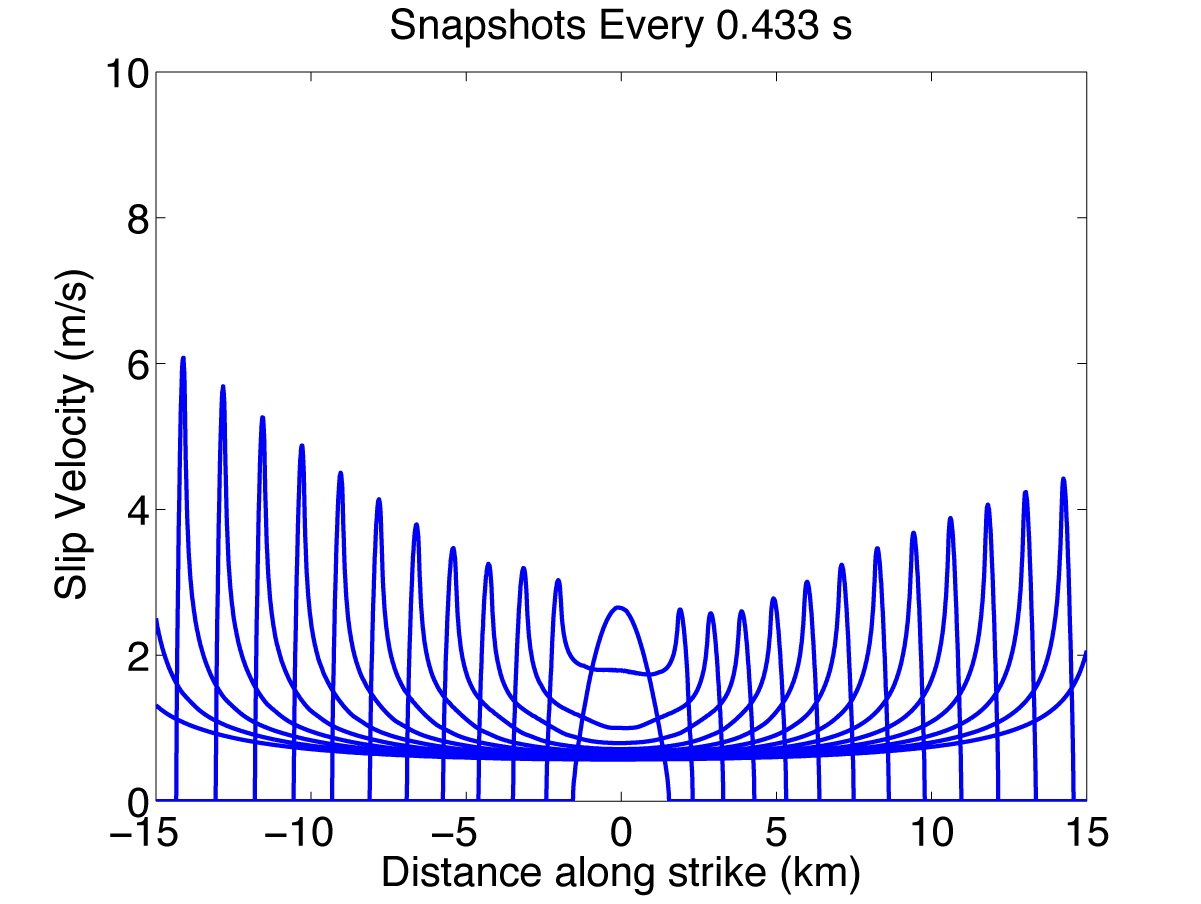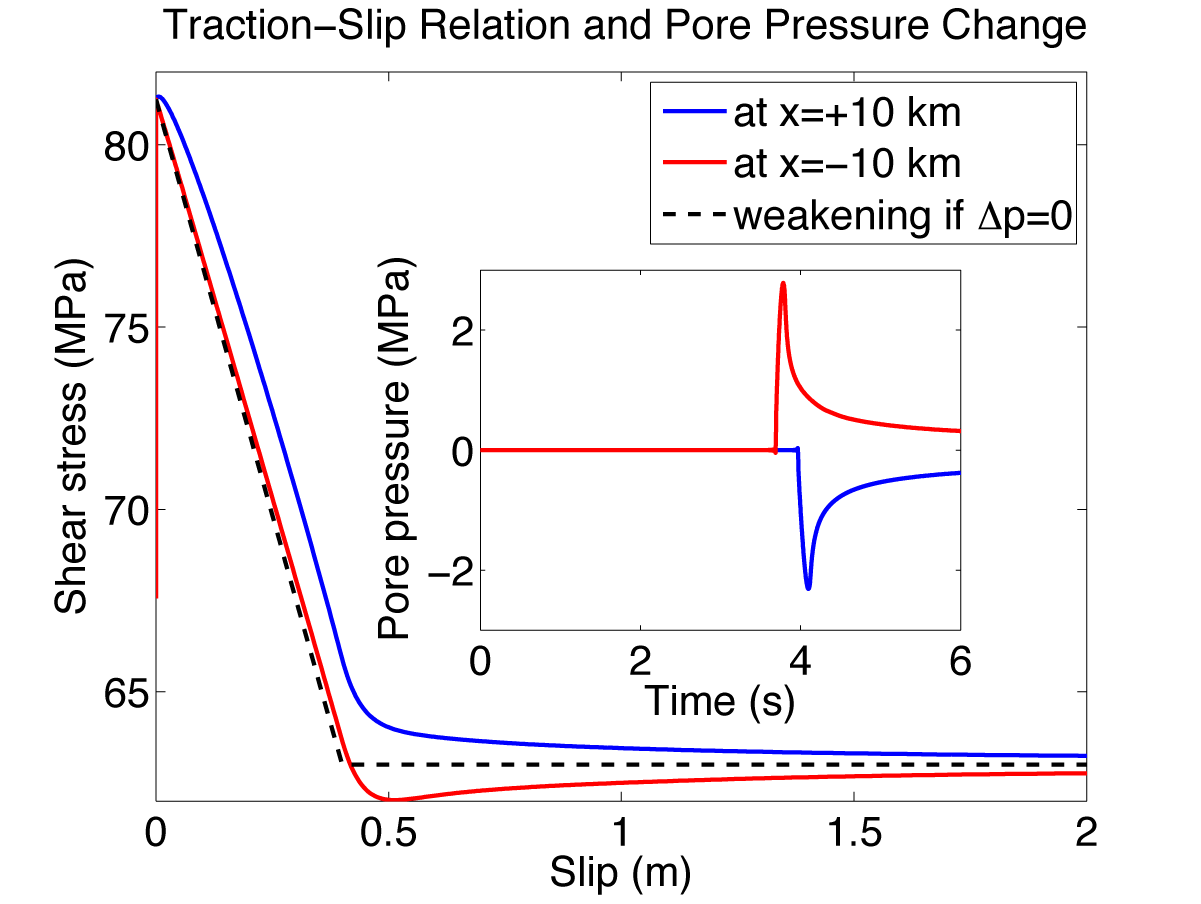(research report from SCEC 2006 annual meeting)
1. Stability analysis of steady sliding at constant coefficient of friction (not shown) Steady sliding at constant f is unstable for most seismologically relevant situations (any f, any poroelastic mismatch, and wave-speed mismatch less than about 30%).
2. Spontaneous rupture dynamics (shown in Figs. 1 and 2) The poroelastic response is incorporated into both our spectral boundary integral code, which has been generalized to the elastic bimaterial formulation, and into our staggered-grid finite difference code. The coefficient of friction obeys a (regularized) linear slip-weakening law in studies done thus far.

Fig. 1: Example from 2D spontaneous rupture calculation. This simple case of rupture between identical elastic solids, but with a contrast in poroelastic properties in damage fringes along the fault, illustrates the poroelastic response in isolation from changes in &sigma. Rupture, nucleated from an overstressed asperity in the center, becomes asymmetric since pore pressure increases to the left and decreases to the right.

Fig. 2: Plot of shear stress vs. slip (main figure) and pore pressure vs. time (inset) at two points, one in each direction. The asymmetry is clearly evident in that the strength drop is larger in the direction of increased p (and smaller in the direction of decreased p).